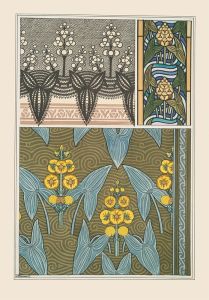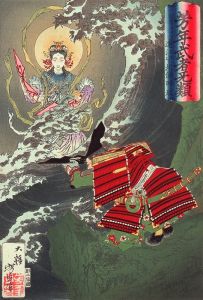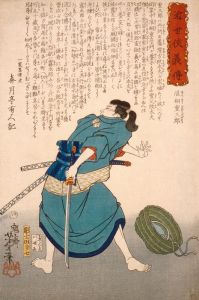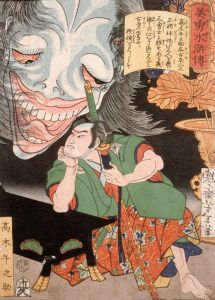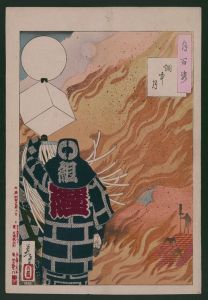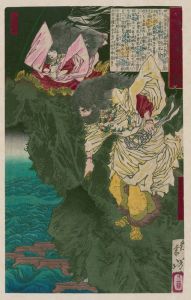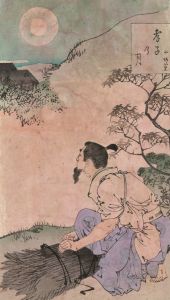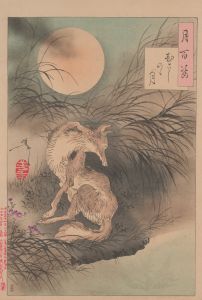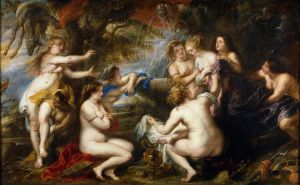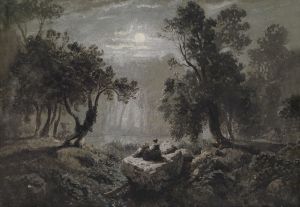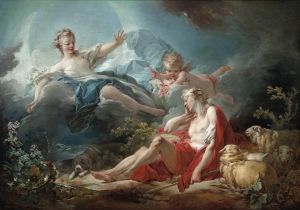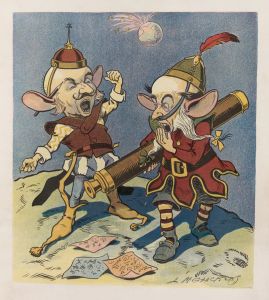
Natsu no yo no tsuki
A hand-painted replica of Tsukioka Yoshitoshi’s masterpiece Natsu no yo no tsuki, meticulously crafted by professional artists to capture the true essence of the original. Each piece is created with museum-quality canvas and rare mineral pigments, carefully painted by experienced artists with delicate brushstrokes and rich, layered colors to perfectly recreate the texture of the original artwork. Unlike machine-printed reproductions, this hand-painted version brings the painting to life, infused with the artist’s emotions and skill in every stroke. Whether for personal collection or home decoration, it instantly elevates the artistic atmosphere of any space.
Tsukioka Yoshitoshi (1839–1892) was a renowned Japanese artist, widely recognized for his work in the ukiyo-e genre of woodblock printing and painting. He is often celebrated for his innovative approach to traditional Japanese art forms and his ability to capture the complexities of human emotion and the supernatural. One of his notable works is "Natsu no yo no tsuki" (Summer Moonlit Night), which exemplifies his unique style and thematic interests.
Yoshitoshi's career spanned a period of significant cultural and political change in Japan, transitioning from the Edo period to the Meiji era. This was a time when Japan was opening up to Western influences, and traditional art forms were being challenged and redefined. Despite these changes, Yoshitoshi remained committed to the ukiyo-e tradition, while also incorporating new techniques and ideas into his work.
"Natsu no yo no tsuki" is part of Yoshitoshi's acclaimed series "One Hundred Aspects of the Moon" (Tsuki hyakushi), which he created between 1885 and 1892. This series is considered one of his masterpieces and consists of 100 woodblock prints, each depicting a scene inspired by Japanese and Chinese history, literature, folklore, or mythology, all unified by the presence of the moon. The moon serves as a central motif, symbolizing various themes such as beauty, mystery, and the passage of time.
In "Natsu no yo no tsuki," Yoshitoshi captures the serene and ethereal quality of a summer night illuminated by the moon. The composition typically features a harmonious blend of natural elements and human figures, often evoking a sense of tranquility and introspection. Yoshitoshi's use of color, line, and composition in this work reflects his mastery of the woodblock printing technique and his ability to convey mood and atmosphere.
Yoshitoshi's work, including "Natsu no yo no tsuki," is characterized by its attention to detail and expressive power. He was known for his ability to depict the human condition with empathy and depth, often exploring themes of beauty, violence, and the supernatural. His prints frequently feature dynamic compositions and vivid imagery, drawing viewers into the world he created.
Despite facing personal and professional challenges, including periods of mental illness and financial difficulties, Yoshitoshi's legacy endures. His work has had a lasting impact on both Japanese and Western art, influencing subsequent generations of artists. Today, Yoshitoshi is celebrated as one of the last great masters of the ukiyo-e tradition, and his prints, including "Natsu no yo no tsuki," continue to be admired for their artistic and cultural significance.
In summary, "Natsu no yo no tsuki" by Tsukioka Yoshitoshi is a testament to the artist's skill and creativity, reflecting his deep engagement with the themes of nature, emotion, and the supernatural. Through his innovative approach to traditional Japanese art, Yoshitoshi has left an indelible mark on the history of art, and his works remain a source of inspiration and admiration.






